Years
later, the Atari 2600 came out, a console
that could really run no game any bigger
than 4k and one of the Atari game
programmers wrote a game called,
"Adventure." In it, a bit like Dungeons
& Dragons, you had a player who had to
find a sword, find a key to the matching
castle, kills the dragons, and return the
Chalice back to the yellow castle.
The
graphics were primitive as this was the
dawn of videogames, but the gameplay was
excellent. It was also not found out until
many years later that the player could
also find an invisible object. Touching
one particular wall with this invisible
object revealed the game author's name. A
rare find as Atari at the time did often
NOT reveal authors names for the games
written for the console.
It is
this degree of innovative design that
further encouraged future game designers
to go beyond this, to create something
bigger than just a 16-room adventure game.
Thus when the Nintendo 8-bit came out,
there was Final Fantasy.
Despite
it's small size of 256k, this game
promised MONTHS of gameplay, not just mere
hours as Atari's Adventure was. In it was
also introduced the NPC, or non-player
characters. In Final Fantasy the player
had control not over just 1-player but 4
of them, and they had to keep tabs on
them.
Make sure
they were outfitted correctly for the
curve of the game's combat which got
exceedingly difficult the further the
player wandered away from their home town
and castle. You could carry more than one
item at a time including healing potions,
weapon types, armor types, and spell
types.
You could
even find and ride different transports to
get past particular terrain types, canoe
to cross deep creeks, frigate to cross the
ocean, and airship to get past tall
mountains.
But, it
was not enough. No. Final Fantasy went on
to today and touts the very proud number
of 15, stating that there are 15-different
games of Final Fantasy now. The last being
available for the PS3 and PC.
But I
didn't want to get too involved in those
games. The root of this book and its
chapters focus on game design and the
tools that design them.
Some of
the programming languages and systems I
used to develop RPGs in the past were the
T.R.S. 80 Model I, Level II computer. The
Sinclair 1000, the Apple ][+, the IBM-pc,
the Commodore Amiga, F-Basic, Turbo
Pascal, Q-Basic 4.5, GFABasic, and lastly
BlitzMAX.
I know
you are thinking, well, why aren't you
just programming in BlitzMAX and hurry up
and write S3 as you planned to ?
No.
That's
not going to happen now. There are too
many ideas, too many directions it can go.
Thus the desire to write this book on RPG,
RPG theories and concepts and ultimately
how to even write your own RPG, completely
from scratch.
No, the
title of this chapter is, "Birth Right"
and will cover the bare basics of a RPG
and the characters involved in them.
First off
this assumes that you have some degree of
programming knowledge, and no, I'm not
going to recommend any absolute and
particular programming language you should
write this in.
But if
you want to hit a large target audience,
on multiple console types including Ps3,
cellphones, PCs, and Macintosh, then you
might do a little research and see what
programming languages are used chiefly
today for building games and the list of
game makers out there. Java comes to mind,
but there are others.
By Birth
Right it means we are going to define a
player. Now I will have certain
preferences and I might even be able to
defend WHY I think some of these are a
good idea, especially referring to S2, a
RP Maker I wrote 20-years ago.
But of
course you are more than welcome to choose
differently.
In S2 I
decided the best starting hit points for a
player is 20, and I'll explain. I know
modern and even very old Japanese RPGs for
many different gaming consoles start the
player with thousands of hit points and
the monsters whack off hundreds per hit,
even the weakest of the bunch.
But I
didn't like this. I wanted to set a
margin. I thought well, why not give the
player a chance at being defeated but only
if he was hit, say 20-times ? So the
player starts out at 20 hit points, and
the monsters, to start, can do no more
than 1 hit-point of damage. Pretty
straight forward.
Now while
you can certainly add a mere 20-hit points
each time the player gains a level of
experience, it would be far better to
determine what the maximum number of hit
points a player could have at their
absolute highest level first, and work
your way from there.
A simple
way to do this would be to let the player
start out at level 1, with 20 hit points,
and at level 99, the maximum level the
player can be, they can have 9999 or as
close to this as possible.
I will
warn you now, when you get around to
writing your own RPG or RPG Maker, you
WILL need to know math, arrays, tables,
algebra, and then some. Let's, for
instance, make a simple table of the
player starting out at 20 hit points but
being at 9999 hit points at level 99. How
would you do this ?
With a
bit of code of course. Here is a loop
using the math in S2 that does just this:
h=20
For i=1 To 99
Print "level="+i+"
hits="+Int(h)
h:+i^1.176593
Next
level=1 hits=20
level=2 hits=21
level=3 hits=23
level=4 hits=26
level=5 hits=31
level=6 hits=37
level=7 hits=45
level=8 hits=54
level=9 hits=65
level=10 hits=78
level=11 hits=93
level=12 hits=109
level=13 hits=127
level=14 hits=147
level=15 hits=169
level=16 hits=193
level=17 hits=219
level=18 hits=247
level=19 hits=276
level=20 hits=307
level=21 hits=340
level=22 hits=375
level=23 hits=412
level=24 hits=452
level=25 hits=494
level=26 hits=538
level=27 hits=584
level=28 hits=632
level=29 hits=682
level=30 hits=734
level=31 hits=788
level=32 hits=844
level=33 hits=903
level=34 hits=964
level=35 hits=1027
level=36 hits=1092
level=37 hits=1159
level=38 hits=1229
level=39 hits=1301
level=40 hits=1375
level=41 hits=1451
level=42 hits=1529
level=43 hits=1610
level=44 hits=1693
level=45 hits=1778
level=46 hits=1866
level=47 hits=1956
level=48 hits=2048
level=49 hits=2143
level=50 hits=2240
level=51 hits=2339
level=52 hits=2441
level=53 hits=2545
level=54 hits=2651
level=55 hits=2760
level=56 hits=2871
level=57 hits=2985
level=58 hits=3101
level=59 hits=3219
level=60 hits=3340
level=61 hits=3463
level=62 hits=3589
level=63 hits=3717
level=64 hits=3847
level=65 hits=3980
level=66 hits=4115
level=67 hits=4253
level=68 hits=4393
level=69 hits=4536
level=70 hits=4681
level=71 hits=4829
level=72 hits=4979
level=73 hits=5132
level=74 hits=5287
level=75 hits=5445
level=76 hits=5605
level=77 hits=5768
level=78 hits=5933
level=79 hits=6101
level=80 hits=6271
level=81 hits=6444
level=82 hits=6619
level=83 hits=6797
level=84 hits=6978
level=85 hits=7161
level=86 hits=7347
level=87 hits=7535
level=88 hits=7726
level=89 hits=7920
level=90 hits=8116
level=91 hits=8315
level=92 hits=8516
level=93 hits=8720
level=94 hits=8927
level=95 hits=9136
level=96 hits=9348
level=97 hits=9562
level=98 hits=9779
level=99 hits=9999
Process complete
Now you
may be saying, oh what a terrible headache
it will be to calculate weapons, armor,
monster hits, etc. ?
Yes, and
no.
If you
want to, you are more than welcome to use
the code and table above to generate THEIR
values as well. For instance, suppose you
don't want the player to ever do more than
9999 hit points of damage to a critter.
Using the
table above you could easily transpose
LEVEL to STRENGTH of player, give that
25%, then the player has a weapon class,
also 01-99, give that 75%, put it all
together and you have 99%. Change HITS to
DAMAGE and you are done.
You could
also use the above table to determine a
monster's hits, how much damage they take,
etc. You could do all of these merely
using the table above, adjusting the input
to be a value from 01-24 and the output to
be a value from 2-999.
Okay ! So
now you want to add other characteristics
to your player. Well, in my own RPG Maker,
S2, I kept it pretty simple. I had
Strength to cover added damage with a
physical weapon, Speed to determine how
fast you could attack, Wisdom to determine
extra damage with magic elemental spells,
and LUCK to determine if you did a HARD
hit or not.
The magic
in S2 was also very simple. I labeled them
RUNESTONES. In them, you would "cast" a
runestone into combat and do damage based
upon a combo. That is, you toss a
runestone in and it does a certain amount
of damage to your targets.
Toss
ANOTHER exact same runestone in and the
damage is more. So it would be up to the
player to "stockpile" these runestones and
then throw them all in to attack difficult
monsters. Purchasing Runestones was a
little odd in that you were charged the
money amount according to how many
Runestones of the same kind you already
had. So the price was higher the more you
had.
The
weapon class did not have a name and the
player could have one or the other but not
both at the same time. A bladed weapon, or
a pistol. A pistol did a fixed amount of
damage each time, 250 no matter what the
player's attributes were.
A sword
though did damage based on three things.
The player's level, the weapon level, and
the player's strength. You see how this is
done now ?
. . .
That's
all for this chapter. Next week we'll
cover "Power Up" and see one particular
RPG for the Sony Playstation One that took
a very creative edge indeed to this
ramping up the usefulness of the multiple
players in the game.
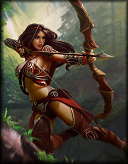
Return
back HOME



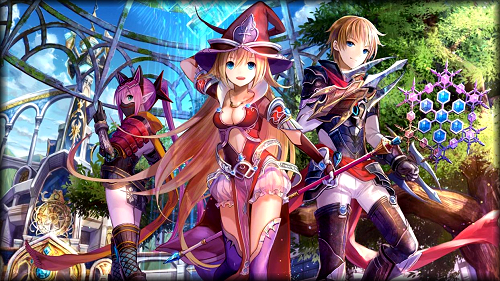
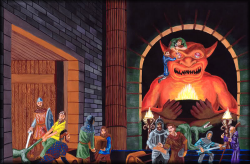
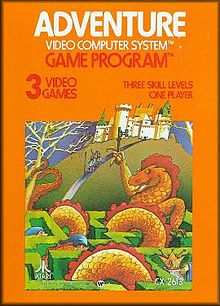
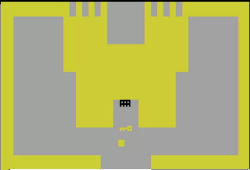
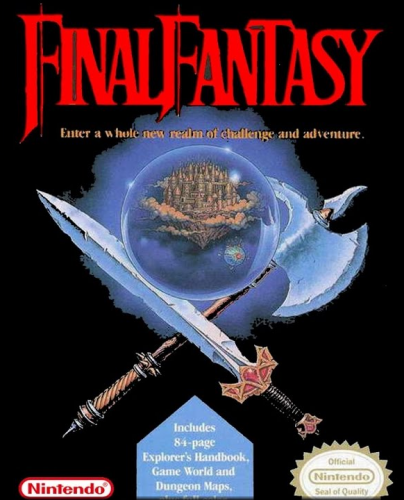
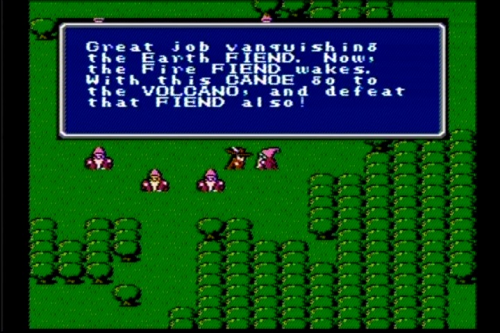
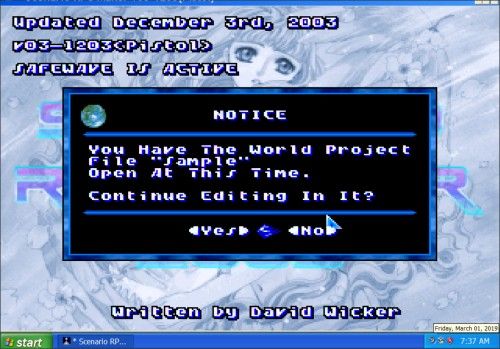
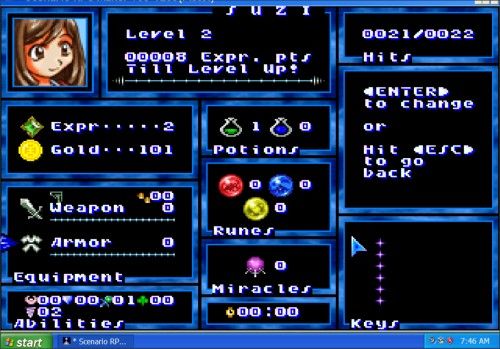
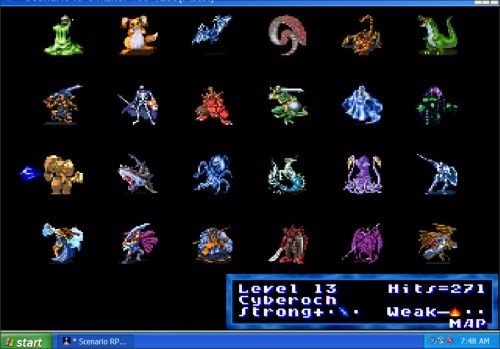
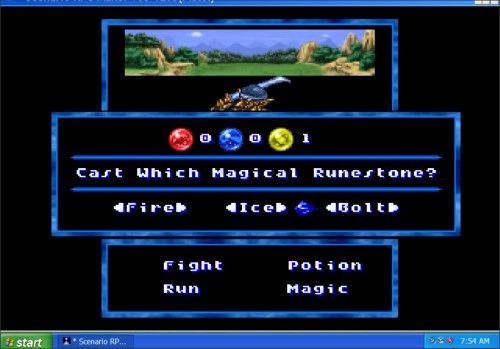


 Flag Writing
Flag Writing